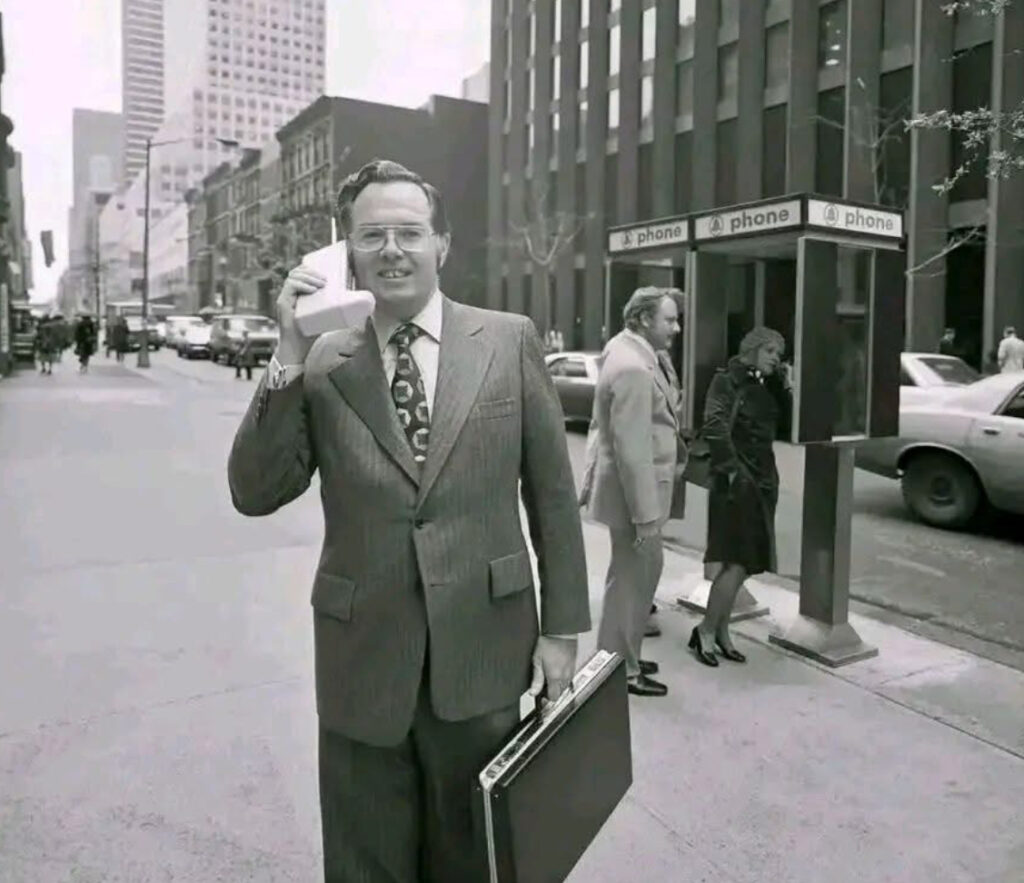On April 3, 1973, Martin Cooper, a Motorola engineer, made history by placing the first mobile phone call. Standing on Sixth Avenue in New York City, Cooper used a prototype of the Motorola DynaTAC to call Dr. Joel S. Engel of Bell Labs, a competitor in the race to develop mobile communication technology.
The DynaTAC prototype was a substantial device, measuring approximately 9 inches in height and weighing around 2.5 pounds. It offered about 35 minutes of talk time and required a 10-hour recharge period. Despite its bulk, the DynaTAC represented a significant leap forward, liberating users from the constraints of landlines and car phones.
Cooper’s call to Engel was not just a demonstration of new technology but also a symbolic gesture, underscoring Motorola’s achievement in the competitive field of telecommunications. Recalling the moment, Cooper said, “I’m calling you on a cell phone, but a real cell phone, a personal, handheld, portable cell phone.”
The development of the DynaTAC was driven by a vision of personal wireless communication. Cooper and his team at Motorola aimed to create a device that would allow individuals to make calls untethered from fixed locations. This vision was realized after years of research and development, culminating in the successful demonstration in 1973.
Following this landmark event, it took a decade for the technology to become commercially available. In 1983, Motorola released the DynaTAC 8000X, the first handheld mobile phone available to consumers. This model maintained the hefty dimensions of the prototype, standing 13 inches tall and weighing 1.75 pounds. It offered 30 minutes of talk time, required 10 hours to recharge, and could store 30 phone numbers. The initial price was $3,995, reflecting the cutting-edge nature of the technology at the time.
The introduction of the DynaTAC 8000X marked the beginning of a new era in personal communication. Despite its high cost and substantial size, the device was a commercial success, signaling a strong consumer demand for mobile communication. This success spurred further innovation in the field, leading to the development of more compact and affordable mobile phones.
The evolution of mobile phones has been rapid and transformative. From the bulky DynaTAC models of the 1980s to today’s sleek smartphones, mobile technology has continually advanced, incorporating features such as text messaging, internet access, and high-resolution cameras. These developments have fundamentally changed how people communicate, access information, and interact with the world.
Reflecting on the journey from the first mobile call to the present, it’s clear that Cooper’s pioneering work laid the foundation for the modern mobile industry. His vision of a personal, portable communication device has been realized beyond what many could have imagined in 1973. Today, mobile phones are ubiquitous, connecting billions of people worldwide and serving as essential tools in daily life.
As we commemorate the anniversary of the first mobile phone call, it’s important to recognize the ingenuity and determination that propelled this technology forward. The story of the DynaTAC and Martin Cooper’s historic call serves as a testament to the power of innovation and its capacity to reshape society.
No comments yet.







